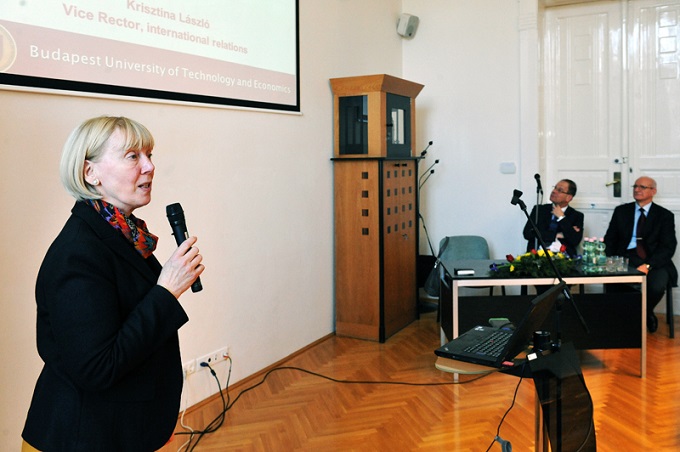2017. May 30.
BME video gets published on the YouTube channel of CESAER.
The international organisation of CESAER (the Conference of European Schools for Advanced Engineering Education and Research) involving Europe’s 51 best higher education institutions of science and technology has launched a video campaign targeting secondary school pupils to demonstrate how varied and attractive engineering can be.
The series of videos has been entitled steAAAm it! (an acronym created from the words SCIENCE, TECHNOLOGY, ENGINEERING, ARCHITECTURE, ARTS AND MATHEMATICS). “We are not the only ones struggling with a shortage of engineers”, complains Krisztina László, BME’s Vice-Rector for International Affairs.

The institutions involved in the programme take turns to share a video every Thursday which seeks to illustrate to what extent each university community contributes to the individual development of young people. These visual materials also allow an insight into the major findings of steAAAm’s innovative research activities and demonstrate how they stimulate progress in science, and contribute to the improvement of the world around us. As we can read on CESAER’s homepage “SteAAAm it! gives us the tools to build the future for the next generations and the world”.
The BME video
|
The organisation, established in 1990, defined its mission with two major objectives: first, to achieve scientific excellence in science, research and education, and second, to provide support for innovations via strengthened cooperation with the industrial sector to ensure the application of cutting edge knowledge in industry and society. CESAER is a non-profit organisation that sets up events for its members including leading universities of technology and science, and colleges and faculties focusing on technology and engineering. The common denominators linking the members are the shared core values and guiding principles such as the high-standard, research-based education of engineers, the reliance on research activities applying state-of-the-art technologies, and a close cooperation with the industry to foster innovation. Their fundamental goal is to maintain a knowledge triangle – education, research and innovation – that facilitates sustainable economic, societal and environmental development. The actual work is done in the Task Forces made up of the delegates of member institutions. Currently BME takes part in the work of two task forces: in the Benchmarking Task Force and in the Scientific Engineering Education Task Force which focuses on the teaching of engineering sciences. The two BME delegates are Ádám Kovács of the Faculty of Mechanical Engineering and Tamás Krámer, the Vice-Dean of the Faculty of Civil Engineering. |
CESAER’s highest legislative body involving all member universities is the General Assembly whose meetings are held annually. “The next assembly, hosted by BME, will take place this October”, said the Vice-Rector for International Affairs to bme.hu. The conference will also be attended by Tibor Navracsics, EU Commissioner for Education, Culture, Multilingualism and Youth and by Françoise Chombar, the CEO of Melexis, a microelectronics engineering company. The detailed programme of the event and further information on CESAER is available at .
“The main topic of the conference in October will address the challenges for universities of science and technology in tertiary engineering education with a particular view on the skills acquired during secondary education”, Krisztina László said when talking of the BME’s preparation for the conference entitled “University engineering education for the 21st century: What do we provide and need?” Lifelong learning is a central buzzword in the areas falling under the scope of STEAAAM. All the member universities, including BME, strive for providing future graduates with a range of civic and intercultural competences and transversal skills such as entrepreneurship, sustainability, and international orientation,” adds the Vice-Rector. The best “commercial” for us is a well-trained graduate open to the world. We think it is vital for a graduate to have a thorough understanding of how scientific methods can be applied in everyday life, and to be aware that sustainable economic progress cannot be achieved without an efficient R&D system.
Krisztina László believes that the setting up of the European Higher Education Area (EHEA) in 1998 and the various Erasmus+ programmes currently available and offering opportunities for generous EU funding have opened up new paths for universities to cooperate. National initiatives have further contributed to an international cooperation of higher education. BME, along with other universities of science and technology, plays a central role in making the society appreciate sciences and understand their significance. This is an approach that needs to be planted in kids’ mind at a very early age. BME works hard towards equipping secondary school students with the knowledge that will prepare them best for their studies at BME.
- TJ -
Photo: Janos Philip


